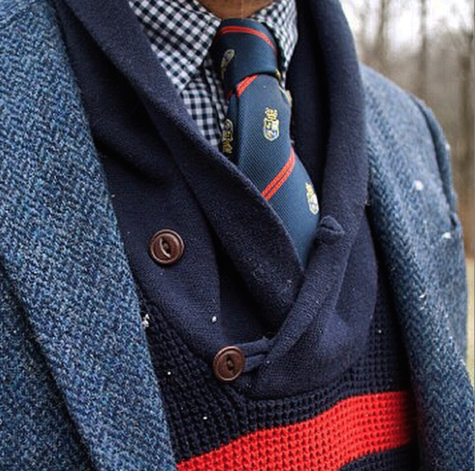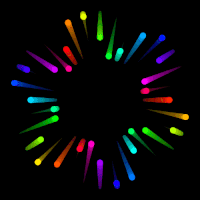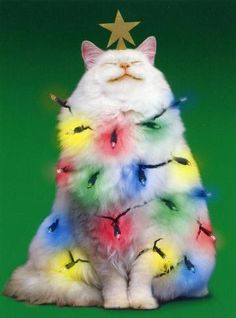Red vs Blue – Color Matters
In high-stakes politics and business, there are only two colors of ties: red and blue. Oh, sure, you might spot purple or yellow now and then, but those are clear statements of aloofness, be they calculated or careless.
Few world leaders or CEOs want to be seen as aloof.
But does it matter whether one wears red or blue? Yes, suggest several studies, including one published in the journal Science on Feb. 6, 2009. More on that in a moment.
First, some color:
During his first address to a joint session of Congress, President Donald Trump wore a blue and white striped tie. Seated behind Trump, Vice President Mike Pence and Paul Ryan, Speaker of the U.S. House of Representatives, both wore blue ties.
For his inauguration on Jan. 20, President Donald Trump wore a red tie with his dark suit, while outgoing President Barack Obama donned a blue tie. Their wives wore the reverse, with Michelle Obama in a red dress and Melania Trump wearing a powder blue ensemble.
In the first presidential debate of 2016, then-nominee Donald Trump donned a blue tie, while the Democratic nominee, Hillary Clinton, wore a red suit. The Democrats may have decided on “red” during the election, as Clinton’s running mate, Sen. Tim Kaine donned a red tie during the first vice presidential debates on Oct. 4, while Trump’s running mate, then-Indiana governor Mike Pence sported a blue necktie
In President Obama’s first 11 days on the job, he wore only red and blue ties, observed Daily News reporter Joe Dziemianowicz. “Obama represents something different in politics, but he dresses the same as everyone else,” said Esquire senior fashion editor Wendell Brown. “Washington, D.C., is a strange place when it comes to style. All the emphasis is on fitting in.”
At the inauguration in January 2009, Obama and Joe Biden seemed to coordinate efforts: “For the inaugural festivities, both executives chose predictable dark gray suits, white dress shirts, enlivened by either baby blue or red necktie,” wrote Lisa Irazarry of The Star-Ledger in New Jersey. “As Obama wore a blue necktie on Monday and Biden wore his blue Tuesday, maybe they prearranged not to duplicate each other alternating necktie colors.”
Former President George H.W. Bush and former first lady Barbara Bush both had on plum overcoats and purple scarves at the inauguration. They can be aloof now. Plus, purple is associated with royalty and we do tend to treat our former presidents as such.
Where’s all this come from?
The ties to red and blue go way back. Neckties are said to be descended from the cravat and used throughout most of history, at least the portion during which humans have been fully clothed. Blue was once associated with the blue blood of British nobility, while red represented the red blood of the Guards.
Red has long been associated with love. And there’s some science to that, too. A study last year found red clothes on women makes men feel more amorous towards them. In sports, athletes wearing red are known to outperform their opponents, in part because referees cut the red-clad competitors some slack, researchers discovered.
Politicians, of course, love to gain advantages. Neckties are one way they try to do that.
As Washington Post columnist Tom Shales wrote of a televised Bush-Kerry presidential debate in 2004: “Bush wore his traditional blue necktie, though a darker shade than the usual robin’s-egg hue, and Kerry wore the classic TV-red necktie; red ties supposedly lend color to the face of whoever wears them, and if there’s anything the Massachusetts senator needs, it’s color.”
But wait, there’s more.
Red and blue are also thought by psychologists to improve brain performance and receptivity to advertising. The 2009 study in Science supports this idea. It also suggests nuances that world leaders and presidential candidates might want to know about, assuming one buys into the notion that presidential messages and speeches are essentially a form of advertising.
The study found that red is the most effective at enhancing our attention to detail, while blue is best at boosting our ability to think creatively.
“Previous research linked blue and red to enhanced cognitive performance, but disagreed on which provides the greatest boost,” said study leader Juliet Zhu of the University of British Columbia. “It really depends on the nature of the task.”
Zhu and colleagues tracked the performance of more than 600 people on cognitive tasks that required either creativity or attention to detail. Most experiments were conducted on computers with a screen that was red, blue or white.
Red boosted performance on detail-oriented tasks such as memory retrieval and proofreading up to 31 percent more than blue. For brainstorming and other creative tasks, blue cues prompted participants to produce twice as many creative outputs compared with red cues.
Why? Look around.
“Thanks to stop signs, emergency vehicles and teachers’ red pens, we associate red with danger, mistakes and caution,” Zhu said. “The avoidance motivation, or heightened state, that red activates makes us vigilant and thus helps us perform tasks where careful attention is required to produce a right or wrong answer.”
And the value of blue?
“Through associations with the sky, the ocean and water, most people associate blue with openness, peace and tranquility,” says Zhu, who conducted the research with UBC doctoral candidate Ravi Mehta. “The benign cues make people feel safe about being creative and exploratory. Not surprisingly it is people’s favorite color.”
Perhaps presidential candidate’s choice of red vs. blue neckties should be made more thoughtfully than they realize.
Source: Live Science



Leave a Reply